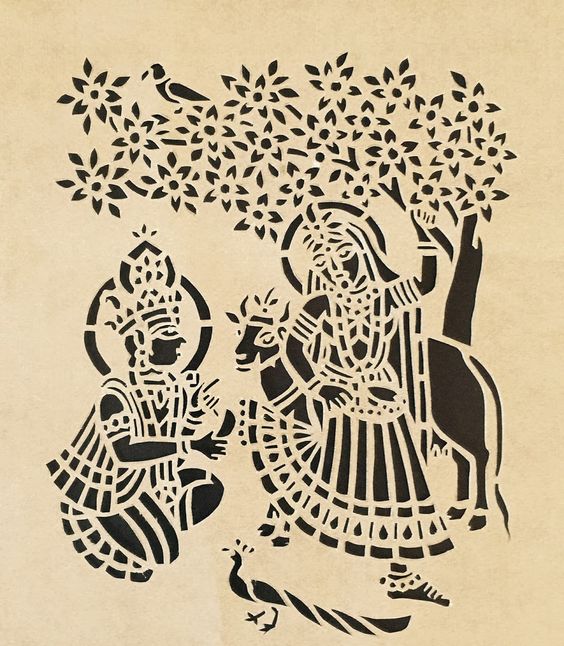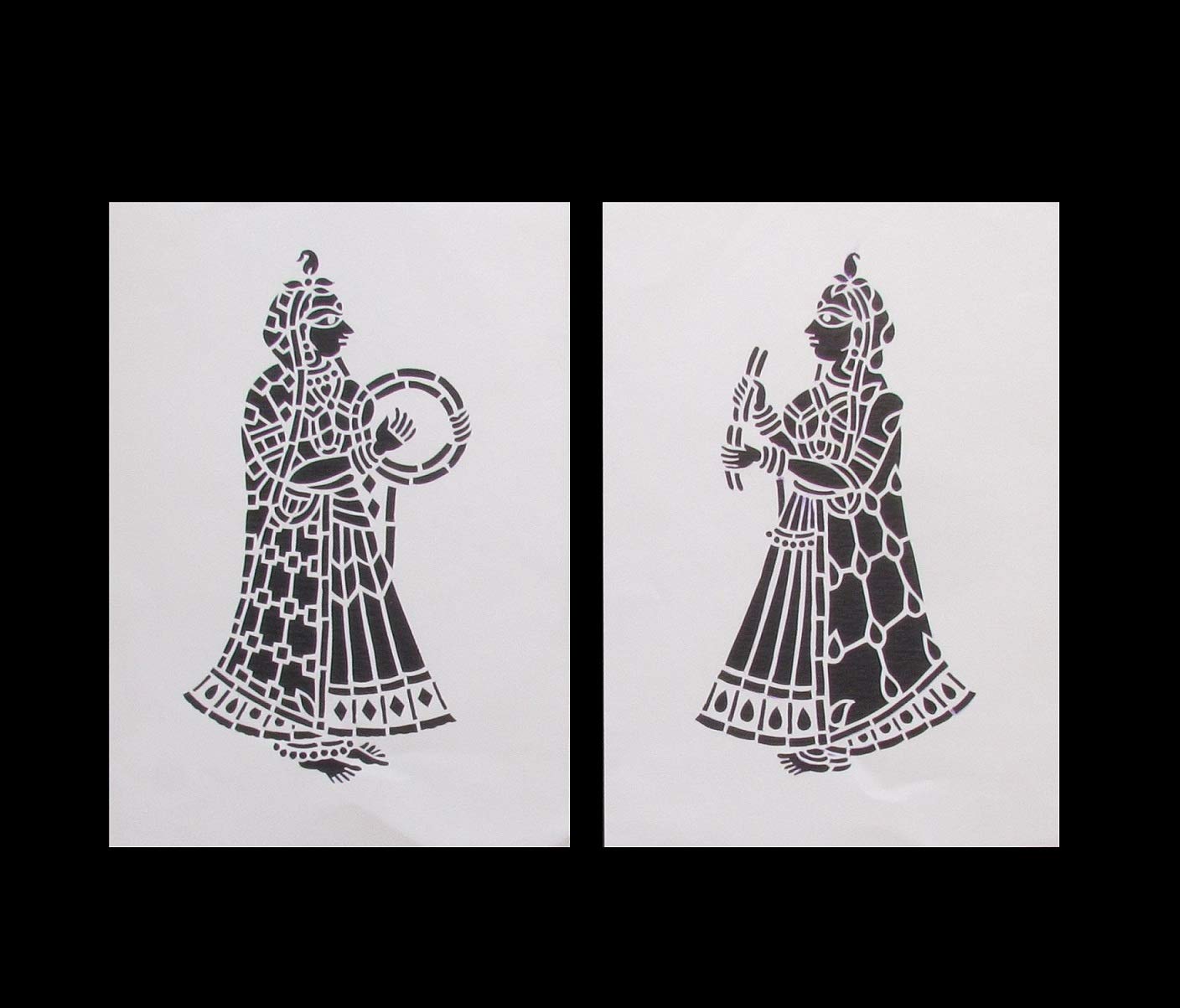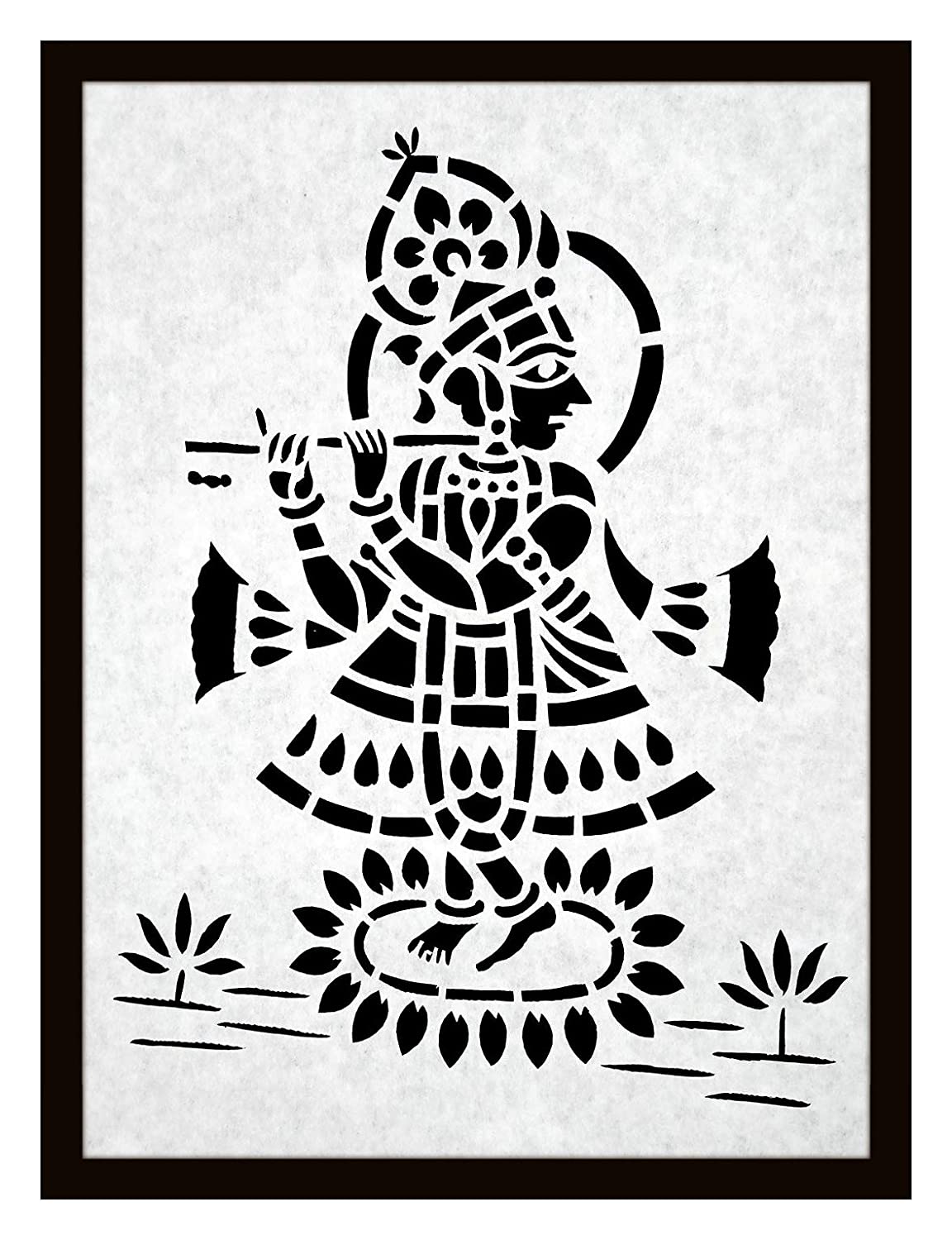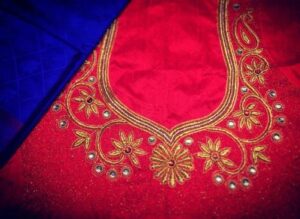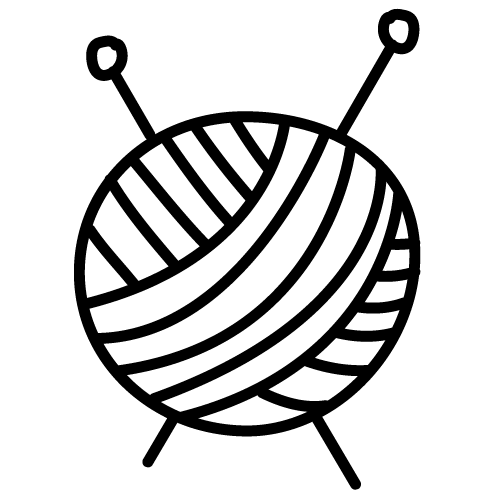Everything You Need to Know About The Ancient
Sanjhi Art.
What is Sanjhi Art?
Sanjhi art is an old art form involving stencilling belonging to Mathura, also known as Indian God, Lord Krishna’s hometown.
It is also referred to as hand-cutting designs on paper.
It is the finest art of spiritual interpretation.
The art form saw a rise in the sixteenth and seventeenth centuries.
At that time, people used Sanjhi themes to decorate the walls and floors of temples.
Who is Lord Krishna?
Lord Krishna is one of the most worshipped and famous Indian godliness.
He is revered as the eighth symbol of the Hindu God Vishnu and as an incomparable god in his own right.
When he was a child, he was loved for his pranks.
Krishna turned into the focal point of various bhakts.
Where is Lord Krishna's hometown?
Mathura is Lord Krishna’s hometown situated at the Krishna Janmasthan Temple Complex.
Mathura is a city in Uttar Pradesh, India.
It is found nearly 55 kilometres north of Agra, around 11 kilometres from the town of Vrindavan, and 22 kilometres from Govardhan.
Mathura is included in the list of seven holy places of India.
Why is it called Sanjhi Art?
Some say Sanjhi’ is taken with words like “Sajavat” meaning ‘decoration’.
Sanjhi art is prepared only once a year before Krishna Janmashtmi.
It shows love and devotion to Krishna.
While others say, the term Sanjhi originated from the term sandhya.
It is a Hindi term meaning the time of night.
Further, Sanji art has a connection to the night.
The art form represents Indian mythological epics in different ways, with the utmost attention on Krishna’s Leela.
What is Krishna Janmashtmi?
Janmashtmi or Gokulashtmi are the two other words by which people refer to Krishna Janmashtmi.
It is a yearly Hindu celebration for the birth of Krishna, the eighth symbol of Vishnu.
It is a significant celebration, especially in the Vaishnavism of Hinduism and celebrated popularly in two states, namely Mathura and Vrindavan.
Various activities are performed to celebrate Janmashtami:
- Dance-drama enactments of the life of Krishna as per the Bhagavata Purana, (for example, Rasa Lila or Krishna Lila)
- Prayers are sung.
- Fasting or Upavasa.
- Night vigil or Ratri Jagaran.
- Festval or Mahotsav.
What does the custom reveal?
This custom reveals that this art form has a connection with Radha.
She prepared Sanjhi rangolis using organic colours, petals, leaves, and colourful gems, to impress God Krishna.
While the gopis quickly copied suit and started drawing intricate designs to woo Krishna.
Sanjhi is famous from the Mughal era; the use of contemporary themes for a more significant outlook.
Who is Radha?
In Hinduism, Radha is the beloved of the god Krishna during that time of his life when he lived among the gopas (cowherds) of Vrindavan.
Radha was the spouse of another gopa yet was the beloved of Krishna’s consorts and his companion.
In the bhakti or the devotional movement of Vaishnavism, Radha is now and then deciphered as representing the human spirit while the Krishna is expressed as the god.
Who are Gopis?
Gopi is a Sanskrit word taken from Gopala.
It means an individual responsible for a herd of cows.
In Hinduism, the name Gopika is the female Gopi.
It is used generally to the gathering of cow herding young women well known in Vaishnavism for their dedication (Bhakti) to Krishna as depicted in the Bhagavata Purana and other Puranic writing.
In Gaudiya Vaishnavism, there are 108 gopikas of Vrindavan.
Despite Radha and the different gopis are “cowherd young ladies,” as indicated by the exclusive religious philosophy of Vaishnavism.
They are the eternal consorts of Krishna, who is the Supreme Personality of Godhead.
Accordingly, they are the inner power, or antaranga shakti, and developments of the internal energy of the Supreme Godhead.
The process of Sanjhi Art.
A stencil is an essential part of the art form for preparing Sanjhi design.
They are usually handmade and designed on paper.
For this designed scissors are also put in use.
Stencils can be put either on smooth surfaces or water, more elaborately where the rangoli is drawn.
Dry colours are used to add colours in the rangoli.
However, the three most critical areas of the work are filling colours, changing the positions of the stencils- either backwards or forward, and preparing the design itself.
What are the themes used?
Some of the common themes used are:
- Peacocks
- Bullock carts
- Horses
- Cows
- Butterflies
- Trees
The elaborate art shows the interest of the artist and the love for God Krishna.
A good Sanjhi design can take an hour to a month’s duration.
What is the use of Sanjhi designs?
Sanjhi designs are used to worship Thakurji (God Krishna) as a ritual.
Tools used in Sanjhi art are worshipped by artists after which they begin the work.
Patterns are prepared to make Lord Krishna’s images.
The cutting process is complicated as it requires enormous focus and skills of the artisans.
These unique designs are used in temples and worship places of God Krishna for decoration usually in Krishna Janmashtami.
While praying to God Krishna during Krishna Janamashtm in the evening, the Sanjhis are kept in the open accompanied by the reading of Lord Krishna’s mantras.
How are Sanjhi designs positioned presently?
Sanjhi designs have made it to the markets in different ways.
Artisans use stencils to prepare:
- Bindis
- Clothing designs
- Henna patterns
- Home décor
- Trays
- Coasters
- Lampshades
- Mirrors
- Wall hangings
- Window partitions
Sanjhi themes have now also gained recognition in the fashion industry and architecture.
It is an interesting fact that many artisans prepare a flawless composition that too just with manually with no prior training or how to prepare sketches or drawings.
The cutouts are created early.
Moreover, it takes training, expertise and endurance.
Sanjhi art is a beautiful gift of skilled Indian artists demanding limited resources.
Sujini art has its origin in the folklore of the Mathura.
Vaishnava temples provided fame to the Sujini art by the fifteenth and sixteenth century.
Sanjhi art is considered as an exquisite art form.
The Brahmin priests practised it.
However now, Sanjhi art is practised by few, and it is now only a mere living tradition in the Indian temples.
Sanjhi art can be seen in Radharamana temple, Vrindavan.
Mythology reveals that Radha attracted Krishna by painted her walls with Sanjhi art.
How were stencils prepared anciently?
Anciently, the stencils were prepared using paper and banana leaves.
However, with time the artisans have started preparing Sanjhi designs using paper which is handmade and can be recycled.
Before, the use of stencil was to prepare rangolis only, but now the artisans have a keen interest in the stencils.
Presently, the stencil is regarded at face value with the ultimate decoration.
The designs can also be looked at as framed artworks.
Is the art protected?
Families of the various artists are trying their level best to keep the art form protected.
Their families are into Sanjhi art from various generations.
People into this art form believe that the mind and heart of artisans fully be into this art, and the focus should be more while preparing Krishna with the correct expressions.
How can the art form be described?
Sanjhi art form is impressive in appearance.
It is the hard work, skill and dedication of the artist that adds beauty to the art form.
Though the choice of colours, and the complexity of jewellery designs also add beauty to work.
Around forty in-house artisans, and travel throughout the globe to conduct workshops on Sujini art form.
Is Sanjhi Art similar to other artforms?
Sanjhi Art has its arm in the city of Mathura in Uttar Pradesh, India.
It is a different artwork compared to artwork having carrying delicate patterns and elaborate picture themes, cut into paper.
Artisans use particular types of shears for this method.
Where did the Sanjhi art grow?
Sanjhi art took place due to the worship of Krishna.
The art form grew in Vrindavan, also known as the Vraja.
It is the homeland of God Krishna, Sujini art arrived at its apex.
Did we miss something?
Let us know in the comments down below!


